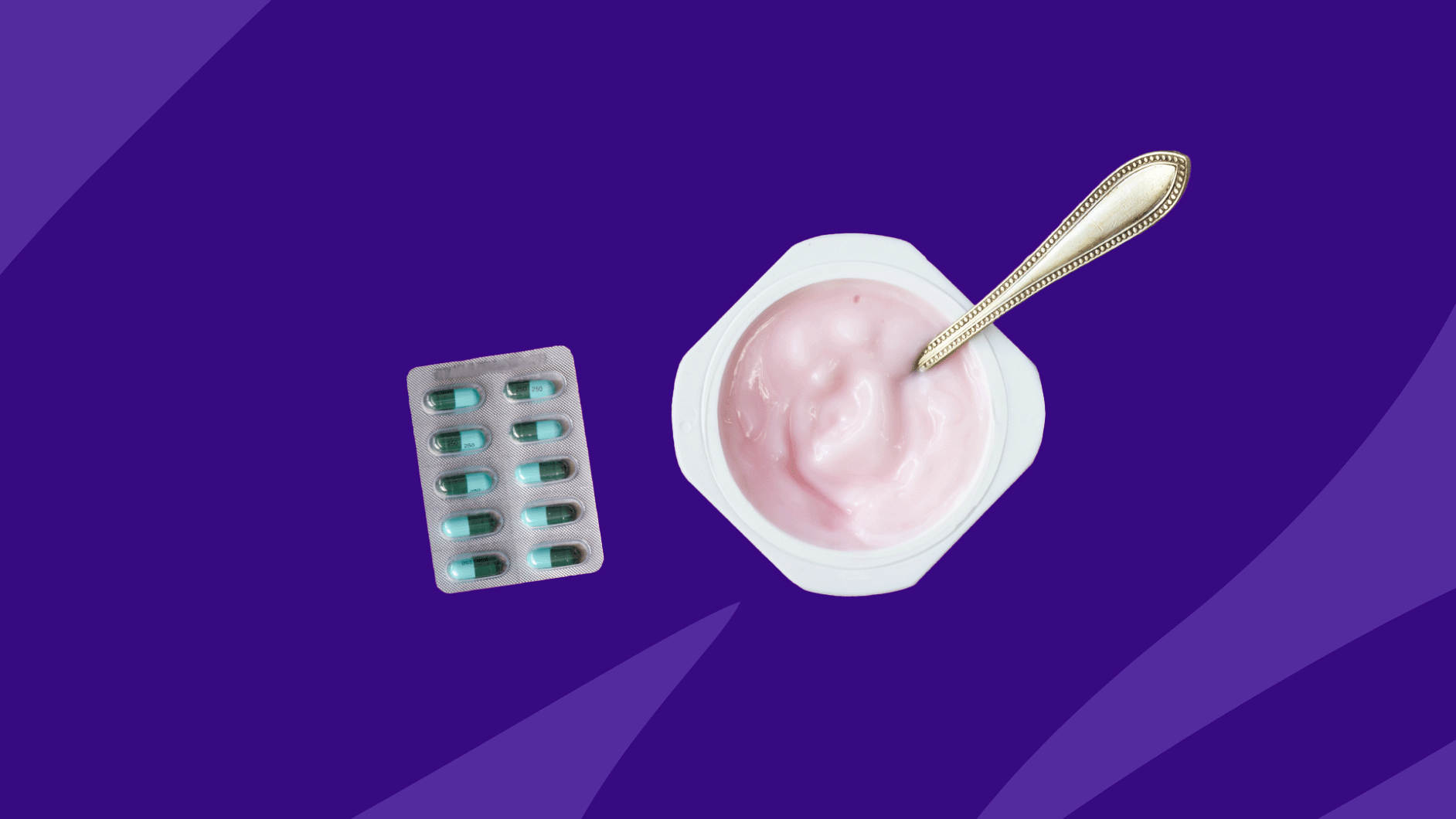Key takeaways
Antibiotics can cause yeast infections by killing off the body’s “good” bacteria, leading to an overgrowth of Candida fungus in the vagina.
Certain broad-spectrum antibiotics and inhaled steroidal treatments for asthma are more likely to disrupt the natural bacterial balance and increase the risk of yeast infections.
Preventive measures against yeast infections include avoiding hot baths and wet clothing, wearing loose and breathable fabrics, and refraining from using scented feminine hygiene products.
Doctors may prescribe an antifungal pill like Diflucan or recommend over-the-counter antifungal creams such as Monistat, alongside dietary suggestions like eating yogurt to replenish good bacteria.
If you have strep throat, a sinus infection, or another bacterial infection, your healthcare provider might prescribe antibiotics to cure it. Antibiotics are very useful drugs that kill off the harmful bacteria that cause illness. Unfortunately, they can also destroy your body’s so-called “good” bacteria in the process.
Because of this, antibiotics often come with some unpleasant side effects, including nausea, dizziness, diarrhea, and yes, vaginal yeast infections. If you’ve experienced them, you’ve probably wondered, “Is there any way to prevent a yeast infection from antibiotics?” Luckily, there are tips that help. Read on to learn more.
RELATED: See our best drug prices
Can you get a yeast infection from antibiotics?
Yes, it is possible to get a yeast infection, or vulvovaginal candidiasis, while taking a course of antibiotics. Antibiotics have the potential to disrupt the balance of your gut microbiome, which includes the healthy bacteria responsible for keeping yeast growth in check.
That can cause an overgrowth of yeast (candida fungus), potentially leading to the hallmark symptoms of a yeast infection: white vaginal discharge that looks like cottage cheese, burning during urination, swelling and redness around the vaginal area and vulva, and pain and soreness during sexual intercourse.
Most women will develop a yeast infection at some point in their lives. According to research, 10% to 30% of women experience yeast infections due to antibiotics. Ninety percent of yeast infections are caused by a type of fungal infection called candida albicans.
Why do you get a yeast infection from antibiotics?
A woman’s vagina maintains its own balanced mix of yeast and bacteria. “Antibiotics can destroy bacteria that protect the vagina or may alter the balance of bacteria present,” says Janelle Luk, MD, medical director and co-founder of Generation Next Fertility in New York, New York.
She explains that a type of bacteria called Lactobacillus keeps the vagina slightly acidic, which keeps vaginal infections at bay. But broad-spectrum antibiotics change all that. As they destroy the bad bacteria causing your illness, they also wipe out beneficial bacteria, including Lactobacillus. When there is less Lactobacillus in your vagina, it becomes less acidic and, therefore, a perfect environment for yeast.
Which antibiotics cause yeast infections?
Do all antibiotics cause yeast infections? It’s a good question—especially if there are multiple options available to treat your condition. Broad-spectrum antibiotics are most likely to throw off your body’s natural bacterial balance, such as:
- Penicillins (like amoxicillin)
- Carbapenems (like imipenem)
- Tetracyclines (like doxycycline)
- Quinolones (like ciprofloxacin)
Some inhaled steroid treatments for asthma can increase the risk of an oral yeast infection.
Who is at risk for a yeast infection from antibiotics?
In addition to being female, the following risk factors can increase the likelihood of developing a yeast infection due to antibiotic use:
- A weakened immune system
- A history of recurrent yeast infections
- Use of hormonal contraceptives, such as birth control pills
- Pregnancy
- Diabetes
Keep in mind that some symptoms common with yeast infections—like white discharge and burning with urination—may have other causes, including:
- Bacterial vaginosis (BV)
- Urinary tract infections (UTIs)
- Sexually transmitted infections (STIs) like herpes, chlamydia, gonorrhea, and trichomoniasis
If you’re experiencing symptoms, seek medical advice from a healthcare professional to determine the appropriate treatment.
RELATED: How can I tell if I have a UTI or yeast infection?
Preventing a yeast infection from antibiotics
First and foremost, you should know that the benefits of antibiotics far outweigh the risk of side effects. Even though antibiotics might cause yeast infections, it is still important to take the medication your healthcare provider prescribed to fully treat a bacterial infection. Failure to finish an antibiotic prescription can cause something called antibiotic resistance. This means that your bacterial infection might become resistant to the drug and much more difficult to cure.
RELATED: What happens if you don’t finish antibiotics?
However, it is possible to prevent some side effects, including yeast infection, with these tips from Dr. Luk:
- Avoid hot tubs or hot baths because yeast forms in warm environments
- Wear loose clothing
- Change out of wet bathing suits or underwear as moisture allows yeast to grow
- Skip feminine hygiene products, like douches
- Avoid vaginal deodorant products such as sprays, powders, or scented pads and tampons
- Wear breathable cotton underwear
- Take probiotics supplements to replenish beneficial bacteria in the gut microbiome, or try eating yogurt, a probiotic-rich food
Your healthcare provider can also prescribe “an antifungal pill called Diflucan (fluconazole) to take concurrently with your antibiotic prescription,” says Rebecca Berens, MD, owner of Vida Family Medicine in Houston, Texas.
Dr. Luke says it’s good to preemptively speak with your healthcare provider about a Diflucan prescription if you experience yeast infections often. If Diflucan doesn’t work, another solution could be to use over-the-counter vaginal creams, suppositories, or ointments such as Monistat.
The bottom line? Antibiotics are a common culprit behind vaginal yeast infections. Preventive measures like avoiding feminine hygiene products and taking probiotics can help reduce your risk. If you experience symptoms that might be a yeast infection, consult a healthcare professional for treatment advice.
- Vaginal Candidiasis, Centers for Disease Control and Prevention (2022)
- Yeast Infection (Vaginal), The Mayo Clinic (2023)




